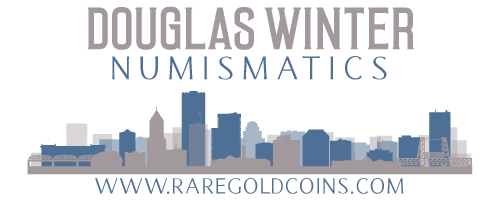Carolina Circle Collection of Charlotte Gold Coinage
/I recently completed cataloging the Carolina Circle Collection of Charlotte gold coinage for Heritage. This collection, which was primarily formed in the 1970’s and 1980’s, is going to be sold by Heritage during their 2008 FUN auction. It is a virtually complete collection, missing only the 1849-C Open Wreath gold dollar and it contains some of the nicest—and freshest—coins from Charlotte that I have seen in some time. I have known the owner of this collection for a number of years and when he made the decision to sell, I suggested that he place the coins in the 2008 FUN auction. About 40% of the collection is housed in very old PCGS and NGC holders and I suggested to this individual that he keep the coins in these old slabs; despite the fact that many of them appeared to be significantly undergraded by today’s standards.
What I really like about this collection is the originality of many of the coins. Almost all of them are in the EF40 to AU58 range and a number are notable for their superb original color and unadulterated surfaces. There are a few individual coins that I think rank as among the most attractive Charlotte gold coins I have ever seen; regardless of date or denomination.
My two favorite gold dollars in this collection are an 1849-C Closed Wreath and an 1850-C. Both are in old PCGS AU58 holders and both, in my opinion, grade considerably finer by today’s standards. I think both coins have great eye appeal and would make excellent additions to a date or type set. I also like the AU55 1857-C gold dollar in this collection. It, too, is in an old green label holder and it seems very choice for the date and grade.
The quarter eagles in the Carolina Circle Collection are outstanding and include a number of Condition Census pieces. Even though it “only” grades NGC AU53, the 1839-C Repunched Date is a lovely original coin and is housed in an old “fatty” holder certain to attract attention. There are PCGS AU55 examples of the 1840-C and 1844-C, both in old green label holders, that are also extremely choice for their designated grade levels. The 1846-C and 1849-C quarter eagles are both also graded AU55 by PCGS.
There are two quarter eagles in this collection that I think are absolutely wonderful coins. The 1852-C is in an old green label PCGS AU58 holder but it appears far choicer than this. I absolutely love this coin’s coloration and I personally regard it as the third finest known for the date, trailing only the Bass II and Elrod coins.
I also really like the 1855-C in this collection. I had never seen or heard of this coin before I went to examine this group a few months ago and I’m sure I let out a big gasp when I first saw it. It is currently in a PCGS MS61 holder but I personally feel it is nicer than this. What I like best about this coin is its freshness as evidenced by its glowing frosty luster, lovely rose-gold color and extremely clean surfaces. It is probably the third finest known example of this rare date and it is the nicest 1855-C I have seen since the incomparable Bass coin was first sold in 1999.
The half eagles in this collection are complete and include a number of important and choice pieces. One that is certain to capture a lot of viewer attention is an 1838-C in PCGS AU58. While reasonably common in lower grades, this date is rare in AU and the current PCGS population is just three in AU58 with a single example higher.
The 1840’s half eagles in the Carolina Circle collection are, for the most part, very nice coins and this includes solid AU examples of the 1840-C, 1841-C, 1844-C and 1846-C. There is an 1842-C Large Date in an old green label PCGS AU55 that seems extremely choice for the grade, in my opinion.
The half eagle in this collection that will probably generate the most interest is the 1842-C Small Date. It is currently housed in an old ANACS AU50 holder but it appears to be considerably nicer than this. As you may or may not know, this is the rarest collectible issue from this mint and the typical piece is well worn with poor eye appeal. The example in this collection is lightly marked, well struck and original with good color and a very pleasing naked-eye appearance.
There are other less glamorous but very attractive half eagles in the Carolina Circle collection as well. An 1847-C in an older PCGS holder has superb color and great eye appeal. The 1851-C, graded AU50 by PCGS many years ago, seems to be way undergraded and it has an exceptional strike for the issue as well as superb deep yellow-gold color. The 1853-C, housed in a green label PCGS AU58 holder, is also attractively toned in rich, natural shadings.
If you follow the rare gold coin market you know that Charlotte coinage has been somewhat out-of-favor for the last few years. I predict that this collection will help to jumpstart this market. It’s been a number of years since this many fresh, attractive pieces have been offered for sale and, typically, when collection like this are sold, new collectors become interested in getting a set started.
For more information on this collection, feel free to contact me and I also suggest that keep an eye on Heritage’s website. I expect that the lots for the FUN sale will be posted sometime around the middle of December.










